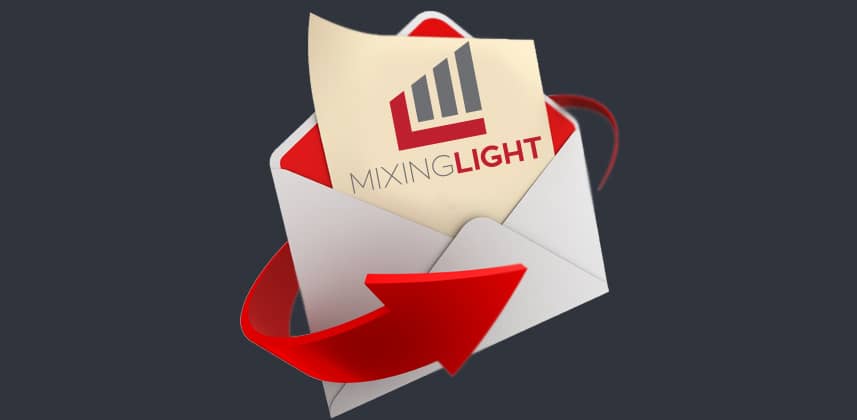| Series |
|---|
FROM THE MAILBAG EPISODE 88
Jumping Into The Deep End Of The HDR Pool
A few weeks ago during one of our Team ML weekly catch up calls the conversation steered to ‘what are we working on’ in our color correction businesses.
After telling the Pat and Dan I was cranking out some more reality TV that week Patrick jumps in with:
’Oh, I’m going to be grading a concert film in HDR/Dolby Vision for Disney +’
On it’s own this statement is pretty simple, but for years Patrick had been saying he wasn’t going to invest in HDR until his clients were asking for it – now all of a sudden he’d be grading a feature length concert film HDR for one the best streaming platforms on the planet?! Oh, and I should mention his first time both doing anything for Disney + and his first HDR project! What could go wrong!!!!
After congratulating Patrick, Dan chimed in with:
‘I’m excited too – I’m going to be grading my first Netflix original feature! But it’s a bit tricky, I have to do a theatrical version and an HDR/Dolby version’
Geez, these guys get the coolest jobs!
In this installment of From The Mailbag we will discuss the challenges that both Patrick & Dan faced.
Have To Jump In At Some Point!
After some additional congratulations back and forth – I started to get worried for Patrick & Dan – like really worried. Sure, I’m the first to admit that I often project my general anxiety on Patrick and Dan but was this going to be epic fail for both of them? Did they know what they were getting into?
The short answer? Yes, both Patrick & Dan could do this, and do it well.
A few years ago when Joey and I took similar giant leaps into the HDR pool, Patrick was right there producing our free Learn Dolby Vision series.
While this was going be Dan’s first Netflix original he did have some HDR experience that he could leverage.
Plus, these guys are pros and weren’t going to be unprepared:
Onboarding – Prior to starting in on these jobs both Dan and Pat reacquainted themselves with HDR/Dolby Vision workflows. Leveraging Dolby’s new individual certification Dolby’s new individual certification, both of them became Dolby certified. Additionally, Dan participated in additional onboarding through Netflix.
Color Management – As you’ll hear in the Mailbag, color management played a large role for both Patrick & Dan in the success of these projects. While they took different approaches – RCM vs ACES, both had well thought out and platform approved color management pipelines.
Dialing In Feel – One of the hardest aspects of HDR grading to grasp is how much is too much. Both Patrick and Dan did the right thing with their clients – doing test grades and having creative conversations before they had to sit down to do the grade. As you hear, both guys still had a few days of dialing in their feel for the grade but knowing a head of time that nearly everyone pushes their first couple HDR grades too far helped both Pat & Dan.
Workflow – both of these projects were a bit complicated from a workflow point of view. Patrick’s had been graded in SDR several years ago – what should he do start from scratch? Grade the SDR master up to HDR? Dan had the challenge of creating both a theatrical & TV version – which necessitated very different light levels and monitoring on a projector plus a direct view monitor. As you’ll hear, these issues presented some unique challenges
Deliverables – One day we’ll live in a world were everyone has 10,000 Nit monitors and we don’t have to worry about TVs of different capabilities but that’s not happening anytime soon. Enter Dolby Vision. The Dolby Vision system at its simplest allows one to deliver downstream (lower nit) HDR versions and an SDR version of a project. In the Mailbag, we discuss the challenges of making a good SDR version and monitoring both HDR/SDR at the same time.
While Pat & Dan can’t yet say any more about the projects, I’m proud to say that both guys nailed it – happy clients, happy OTTs and valuable HDR experience under their belts.
If you’re just starting to navigate the world of HDR grading be sure to take a listen to this episode!
Do You Want Team Mixing Light To Answer A Question?
Remember, if you have questions that you’d like to get an opinion on please use the contact form.
Your questions can be aesthetic, technical, or even client-related. We’d love to hear from you, and your question might make future episodes of From The MailBag.
Also, if you have any questions or something to add to the conversation please use the comments below.
Enjoy the MailBag!
-Robbie
Member Content
Sorry... the rest of this content is for members only. You'll need to login or Join Now to continue (we hope you do!).
Need more information about our memberships? Click to learn more.
Membership optionsMember Login


